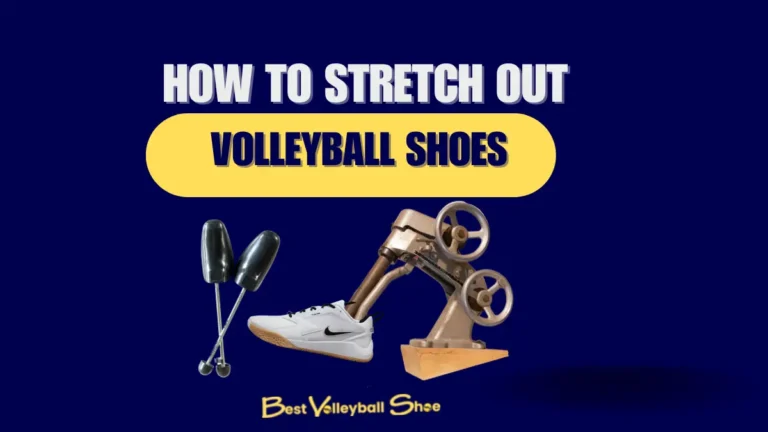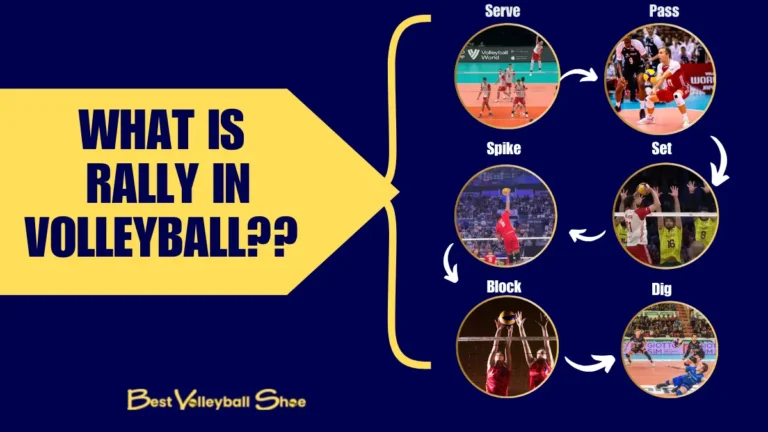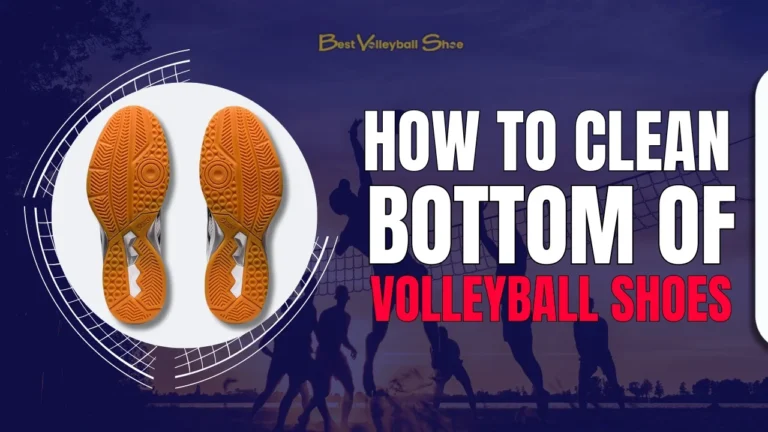Can I Use Running Shoes For Volleyball?
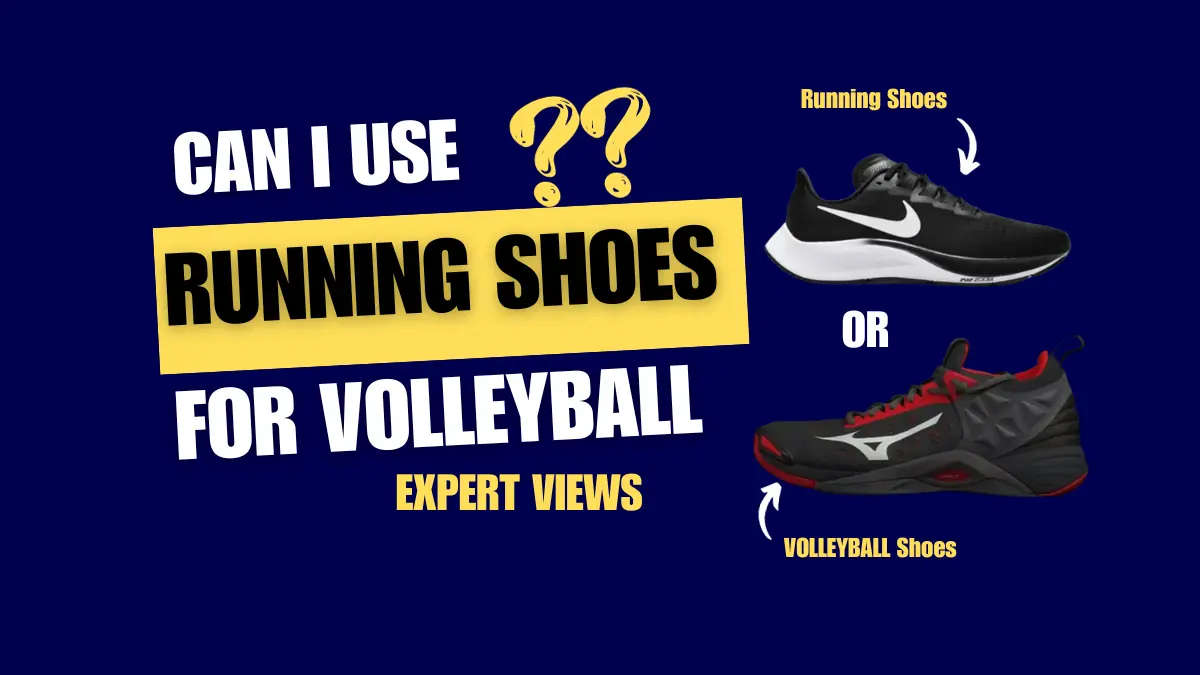
Volleyball shoes can be a nightmare especially when you choose the wrong or unsuitable pair for playing volleyball. Therefore, experts suggest using a dedicated and specialized pair for athletes.
Can I Use running shoes for volleyball? is one of the many frequently asked questions by beginners, while selecting some better volleyball sneakers.
Based on my personal opinion built on many years of experience as a former professional volleyball player I won’t recommend wearing running shoes for volleyball. But why I don’t recommend running shoes for volleyball? is another aspect and requires a detailed discussion.
In this article, I will give a detailed answer to this question with logic, examples, and experience. I will be discussing the various aspects including the difference between running and volleyball shoes based on the shoe design, construction material, and durability.
So let’s start without any delay!
What Governs the Shoes Requirements For Volleyball And Running?
Playing volleyball is 180 degrees different from running. In volleyball matches athletes jump intensely, extensively, and more frequently. Moreover, they also perform digging, diving, quick-stepping, sprinting, and lateral movements during a match.
On the other hand, running is a straight movement that does not involve jumping and movements like volleyball. You won’t be diving or digging while running or jumping like a spiker.
In fact, this difference gives rise to separate shoe demands for both volleyball and running. Hence, a volleyball player will require shock-absorbent shoes that have decent traction and lateral support.
Can I Use Running Shoes for Volleyball?
I don’t recommend wearing running shoes for volleyball due to the following reasons:-
Inadequate Cushioning
Weight
Weight is another important factor and when creating, the designers do everything to make their shoes as light as possible.
Design and Support
Both running shoes and volleyball shoes have different requirements. Hence, the difference in the design is logical and obvious. Running shoes are designed for forward motion. Whereas, volleyball involves a lot of multi-directional movements, so you need a shoe that can handle that.
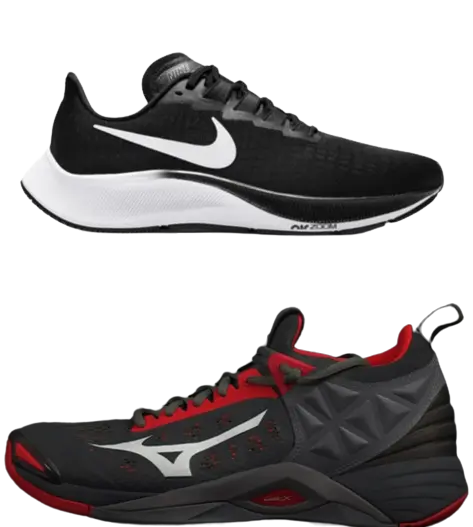
In the image, you can see 2 shoes the upper is a Nike Pegasus 39 running shoe and the second one is the Mizuno Wave Momentum volleyball shoes.
Here you can clearly see more ankle support, lateral stability, and toe protection in the Mizuno wave momentum which is not the case with the Nike.
I once used my Asics Gel-Kayano 27 running shoes for playing volleyball but the experience was terrible. I like these sneakers, and I am happy to wear them always and everywhere, but I would never play volleyball in them.
Traction
Traction is a fundamental factor for a good volleyball shoe. It directly influences an athlete’s performance and safety on the volleyball court. Whether it’s preventing slips and falls, ensuring stability during rapid movements, or enabling precise control over the game, the role of traction in volleyball shoes is paramount.

In the above image, the upper photo is of the running shoes whereas the lower one is of the volleyball shoes. After looking at the outsole surface one can easily understand the level of traction offered by both shoes.
Upper Material
What is the difference between Volleyball Shoes and Running Shoes?
I have tried to elaborate on the difference between both shoes in the table by considering a few important factors:-
| Aspect | Volleyball Shoes | Running Shoes |
| Breathability | Less Breathable Compared to the Running Shoes | More Breathable compared to Volleyball Shoes |
| Cushioning | Soft gum rubber specifically designed for the court-like gym floor | Light cushioning to mitigate the small and frequent blows during running |
| Jumping | Facilitate jumping and equipped with special technology to give a push | Facilitate forward movement and keep the gravity forward not good for high jumps |
| Durability | Less Durable | More durable due to outdoor usage |
| Outsole | More Breathable Compared to Volleyball Shoes | Hard carbon rubber specifically designed for outdoor surfaces like asphalt and concrete |
| Weight | Heavier in weight | Lighter in weight |
Can I use Volleyball Shoes for Running?
Volleyball shoes can also not used be for running. This is due to the earlier explanation of the differences between the shoe requirements and the construction for both. To me, the most important reasons for not using volleyball shoes for running are the weight, design, outsole construction, and durability.
Weight
Volleyball shoes are heavier in weight compared to running shoes. Therefore, they are not suitable for running. Obviously, heavier shoes significantly influence running efficiency.
Cushioning
Running shoes are designed to absorb small but consistent shocks as well as to keep the center of gravity of your foot forward. However, this is not the case with volleyball shoes where shoes are crafted to absorb the shocks and facilitate the smooth landing.
Outsole Construction
Why Are Dedicated Volleyball Shoes Advised?
With the advancement in shoe construction technology, footwear-making companies are focusing more on the R&D in the shoe industry.
They are developing modern technologies based on the biomechanics of various games. In the strive to mitigate the negative impact of different athletic activities on the human body, new shoe models are launched.
Therefore, it is advisable to choose a dedicated volleyball shoe pair to avoid injuries as well as boost your performance on the court.
Shoes To Avoid for Playing Volleyball
Apart from the running shoes, the following shoes are also not recommended due to the reasons mentioned against each
Final Thoughts
Choosing the right pair of sport-specific shoes, especially when it comes to volleyball, is crucial. Volleyball, like many other sports, places unique demands and pressure on your feet. The only way to securely cater to this demand is by using appropriate footwear. It’s not merely about style; it’s about functionality, performance, and, most importantly, your safety.
When it comes to running shoes they are unfit and unsuitable for playing volleyball. The basic reason for their unsuitability is the design, traction, cushioning, and support which are the key features of any volleyball shoes. So, it is always recommended to use the specialized shoes crafted for volleyball.
Frequently Asked Questions?
Can I wear badminton shoes to play volleyball?
This question is also the same as of the use of the running shoes for the volleyball. I have also written a dedicated article on this topic covering all the necessary details and reasons to support the argument that you can not wear badminton shoes for volleyball.

